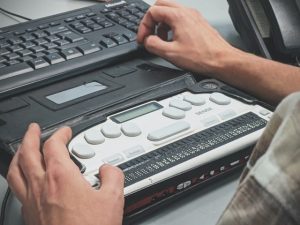The Privacy Office, a team housed in the University of Illinois’s Technology Services geared towards data security and privacy for students, faculty, and staff, partnered with the Big Ten Academic Alliance to host their third annual Privacy Everywhere Conference and their first hybrid event. This conference, hosted at the Beckman Institute and conveyed over Zoom, focused on “Building Digital Trust,” diving into issues like understanding privacy issues as a layperson, higher education privacy initiatives, and digital surveillance.
In our current societal climate, internet use is ubiquitous and impossible to avoid if you want to be a part of social life. The Privacy Conference provided the opportunity for attendees to learn how “decisions about privacy affect our professional, educational, and personal lives.” I attended this event to educate myself on how data practices, policies, and ethics affect my autonomy and what I can do to protect my privacy.

Conference points that stayed with me:
- Data Minimization Principle – minimizing data collection and deleting data instead of storing, sharing, and selling it.
- Patron Burden – we are expected as service users to know all the proper steps and practices to protect our data, even when “Terms and Conditions” and service systems are purposely opaque.
- Digital Surveillance & Legislation – state legislation is focused on protecting children, leaving a loophole for law enforcement and companies to share and retain information
- Awareness – as a layperson, there is a lot I don’t know about protecting my data, but I attended this conference to learn. Look into your state legislation on data protection and privacy and share the information you’ve learned with your circle.
If you missed the conference, you can watch the recording of each session via MediaSpace, if you’re affiliated with the University of Illinois. Be on the lookout for the 2024 conference. The conference welcomes university students, faculty, and staff!


